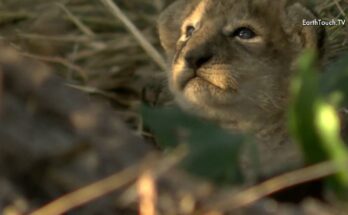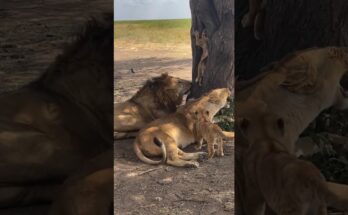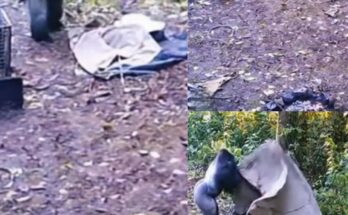In the heart of the Serengeti, the golden plains echo with the playful yet fierce growls of lion cubs. These growls, though not as thunderous as those of adult lions, are essential in the development of these future kings and queens of the savanna. Lion cubs begin growling at just a few weeks old, using these vocalizations to communicate with their mothers and siblings. What might sound like harmless noise to us is actually part of their early training in asserting dominance and learning the social rules of the pride.
Within the safety of the pride, cubs play, pounce, and wrestle — each growl and snarl a lesson in survival. These interactions are vital in shaping their hunting and defensive skills. Their growling also helps establish hierarchy among siblings, teaching them how to compete for food and attention without causing serious harm.
The Serengeti, with its vast grasslands and scattered acacia trees, provides the perfect backdrop for this wild upbringing. As the cubs grow stronger, their growls deepen and their playful fights become more strategic, mimicking the adult behaviors they’ll need to thrive. Observers often witness cubs stalking one another, crouching low in the grass before leaping into action — their growls a mix of excitement and youthful aggression.
Growling is more than just noise; it’s the voice of their wild spirit. For tourists and wildlife enthusiasts, witnessing lion cubs growling and tumbling across the plains is a powerful reminder of nature’s raw beauty and the delicate balance of life in the wild. In time, those little growls will become the commanding roars that echo across the Serengeti — a sound both awe-inspiring and iconic, born from playful beginnings.


